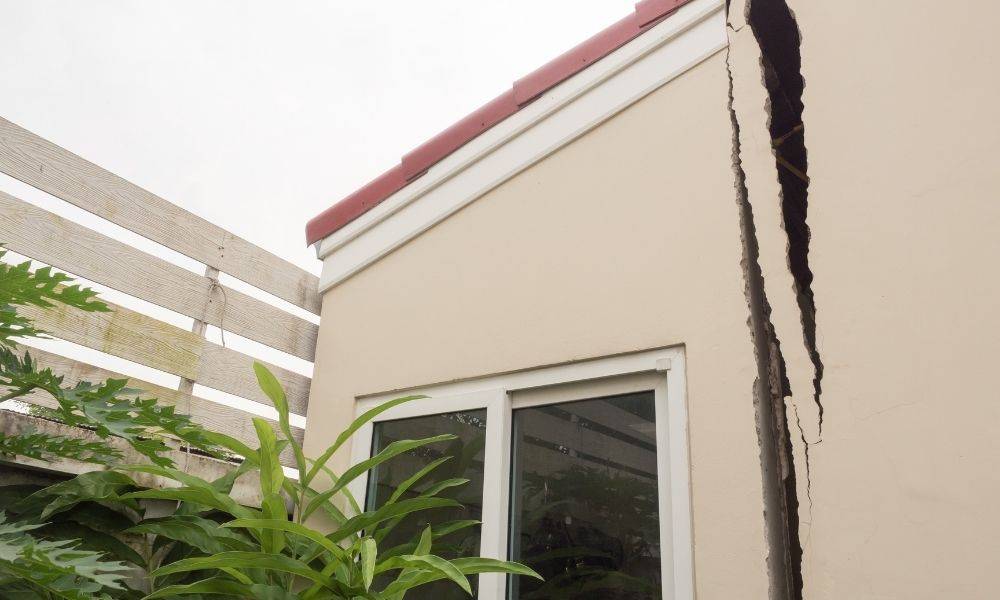Top Reasons for Structural Damage in Buildings

The integrity of a building’s structure is a fundamental aspect of its safety and longevity. Understanding the common reasons for structural damage in buildings is crucial for homeowners, builders, and property managers.
In this blog post, we will delve into the top reasons for structural damage in buildings, helping you recognize potential threats and take preventive measures to ensure your property remains safe and stable.
1. Foundation Settlement
The foundation is the literal bedrock of a building. Any issues with it can have far-reaching consequences. Foundation settlement is a common reason for structural damage. This occurs when the soil beneath the foundation shifts, sinks, or settles unevenly. Poor soil compaction, excess moisture, or the absence of proper drainage systems are often to blame.
To prevent foundation settlement, regular inspections and maintenance are crucial. Proper drainage, grading, and foundation underpinning can help stabilize the foundation.
2. Water Damage
Water is a relentless adversary when it comes to structural integrity. Leaks, floods, and inadequate drainage can infiltrate a building, causing damage to walls, floors, and the overall structure. Over time, water can weaken building materials and promote mold growth, exacerbating the problem.
Proper waterproofing, regular roof and gutter maintenance, and swift responses to leaks are essential in preventing water damage. A well-designed drainage system can help divert water away from the building.
3. Poor Construction Practices
The quality of construction plays a significant role in a building’s long-term health. Poor workmanship, improper design, and the use of subpar materials can compromise structural integrity. This may result from cost-cutting measures or a lack of expertise in construction.
To mitigate the risks associated with poor construction practices, it’s essential to hire reputable contractors, conduct thorough due diligence, and use high-quality materials. Regular inspections during construction can also catch and rectify issues early on.
4. Age and Wear
As buildings age, the materials used in their construction naturally deteriorate. Over time, structural components can weaken, leading to cracks, sagging, and other signs of wear and tear. In addition to aging, daily wear and tear from occupants and weather can further weaken a building’s structure.
It’s crucial to do regular maintenance and inspections to fix any structural issues that might develop over time. Whether it’s normal wear and tear or damage from the weather, fixing problems quickly can make the building last longer. For example, getting a new roof in West Jordan can stop water damage and leaks that might cause bigger problems later.
5. Natural Disasters
Natural disasters such as earthquakes, hurricanes, tornadoes, and floods can inflict significant structural damage. These events exert forces that often exceed a building’s design parameters, leading to structural failures.
While you can’t prevent natural disasters, you can take steps to mitigate their impact. Building designs should adhere to local building codes that consider the specific risks of the area. Reinforced structures and proper storm-resistant materials can reduce the damage caused by these events.
6. Termites and Pests
Wood-destroying insects, particularly termites, pose a significant threat to the structural integrity of buildings, especially those constructed with wooden elements. Termites can silently eat away at the wood, weakening structural components over time.
Regular pest inspections and the use of termite-resistant materials can help prevent infestations. Early detection and prompt treatment are key to mitigating damage if an infestation does occur.
7. Overloading and Weight Distribution
Excessive loads and improper weight distribution can place undue stress on a building’s structure. This may result from adding additional floors, heavy equipment, or modifications without properly assessing the load-bearing capacity of the structure.
It’s essential to consult with structural engineers and architects when making significant structural changes to a building. They can ensure that the load-bearing elements are appropriately designed and reinforced.
8. Vibration and Settling
Vibrations from nearby construction, heavy machinery, or seismic activity can cause structural damage over time. These vibrations can lead to cracks, weakening of materials, and even structural failure.
Building codes often specify the need for vibration control measures in areas prone to such disturbances. Proper structural design can also help absorb vibrations and prevent damage.
9. Corrosion
Corrosion is a significant concern in buildings, particularly those located near bodies of water or in areas with high humidity. It primarily affects metal components like steel beams, causing them to weaken and deteriorate.
Regular inspections and maintenance are essential to identify and address corrosion. Protective coatings and rust-resistant materials can be used to prevent its occurrence.
10. Lack of Maintenance
Neglecting routine maintenance and inspections is one of the most common reasons for structural damage. Small issues left unaddressed can snowball into significant problems. Regular upkeep is vital to detect and rectify problems early on.
Conclusion
Understanding the top reasons for structural damage in buildings is the first step toward preserving the safety and longevity of your property. By addressing these issues through proper construction practices, regular maintenance, and, when necessary, professional intervention, you can ensure that your building remains stable, secure, and resilient in the face of various threats. Structural integrity is not something to be taken lightly, as it directly impacts the safety and value of your investment.









